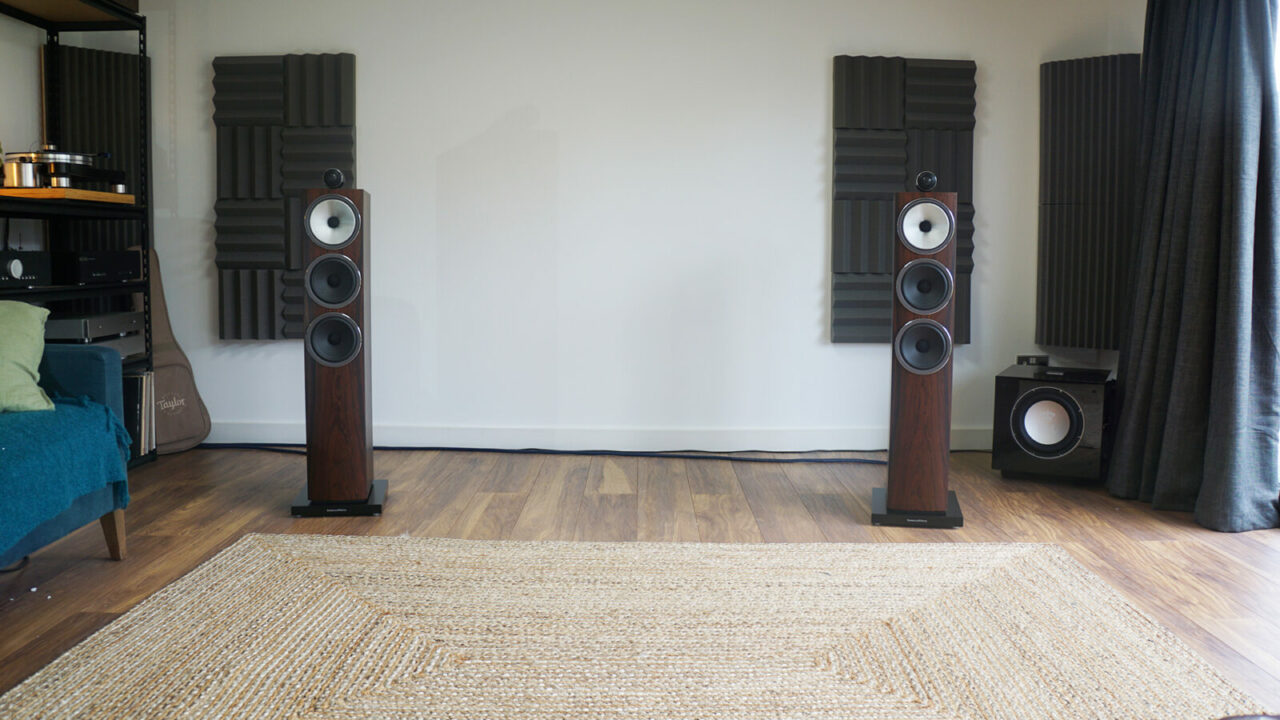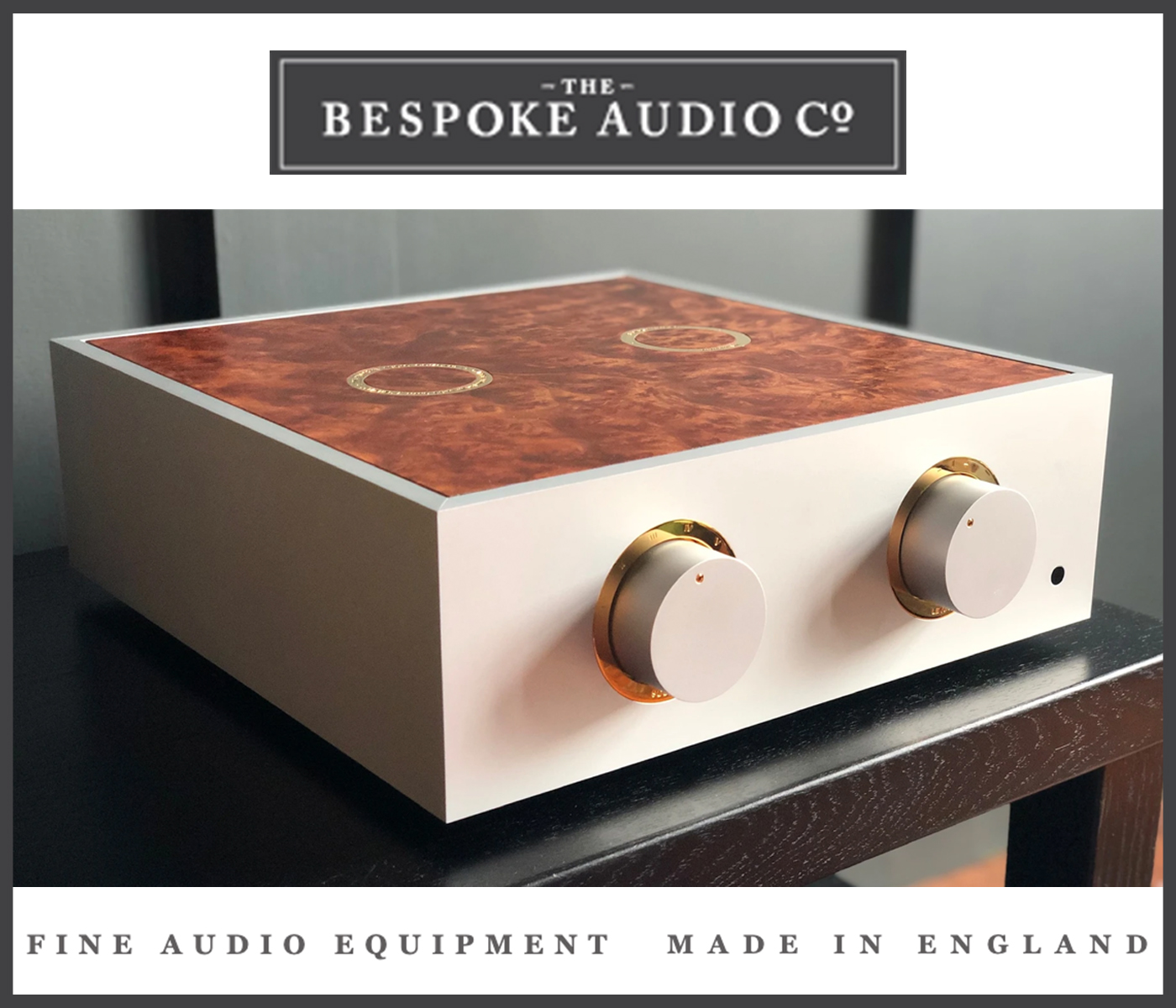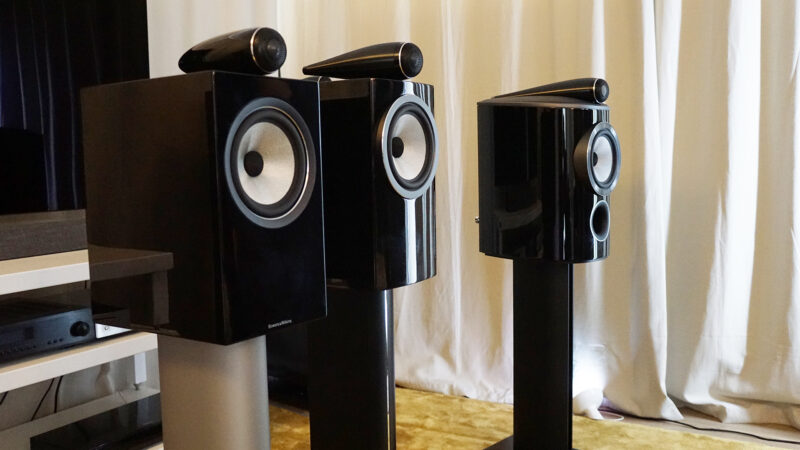If I were to dial ‘quality British loudspeakers that push boundaries’ into a hifi ChatGPT, it would simply return ‘Bowers & Wilkins’, so established is the brand’s envied reputation.
And this is for good reason, thanks to its ongoing commitment to redefining how to craft loudspeaker cabinets and pushing the audio envelope with its drive unit technology.
If you want a taste of just how far this company has taken the hifi loudspeaker art, last year’s 800 Series Diamond history video is a lesson in not resting on your laurels for a brand at the top of its game.
Thankfully the rebirth of this flagship range has led to trickle down tech within Bowers’ cheaper and in some ways more domestically friendly speakers, which has evolved the 700 models (that sit between the 800 and 600 ranges) into Mk3 territory, referred to as the 700 S3 Series.
As is the Bowers & Wilkins way, the model numbers descend as we get further up the range, making the five-driver 702 S3 the leading model, followed by the four-driver 703 S3 (under review here), with the 704 S3 floorstander and a choice of three standmount speakers bringing up the rear. There’s also two centre channel speakers to pick from, should you want to build a dedicated 700 Series surround sound setup.
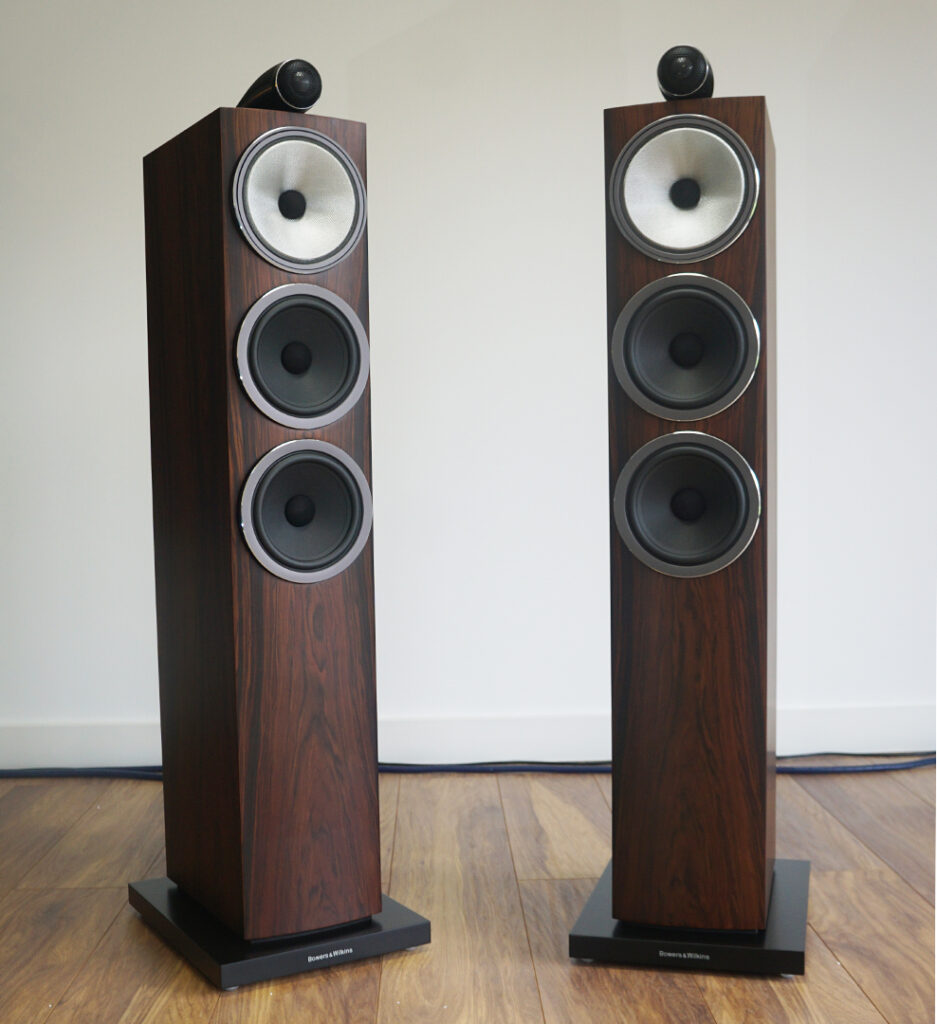
Bowers & Wilkins 703 S3 is a three-way design with twin 6.5″ bass drivers, 6″ midrange and a 1″ tweeter that’s housed in its own top mounted external enclosure.
Ground up refinements
Almost every element of the 700 Series has been redefined for the new range, and what you immediately welcome in the revamped 703 is that for the first time it now features the company’s trademark external tweeter on top tech, making it the most affordable B&W floorstander (at £4,200) to sport this addition.
This means you get the same 25mm carbon dome tweeter with 300micron thick carbon stiffening ring (to provide an improved breakup threshold to 47kHz) from the previous range, this time housed in a longer fluted tube for a more open sound, that’s honed from a solid aluminium billet to null resonance.
The tweeter assembly attaches via a vibration absorbing compound at two contact points to decouple it from the main cabinet where it attaches (the previous gen had a single contact point). In the flesh you can feel this at work, with the tweeter housing’s mounting having small degrees of intended flex.
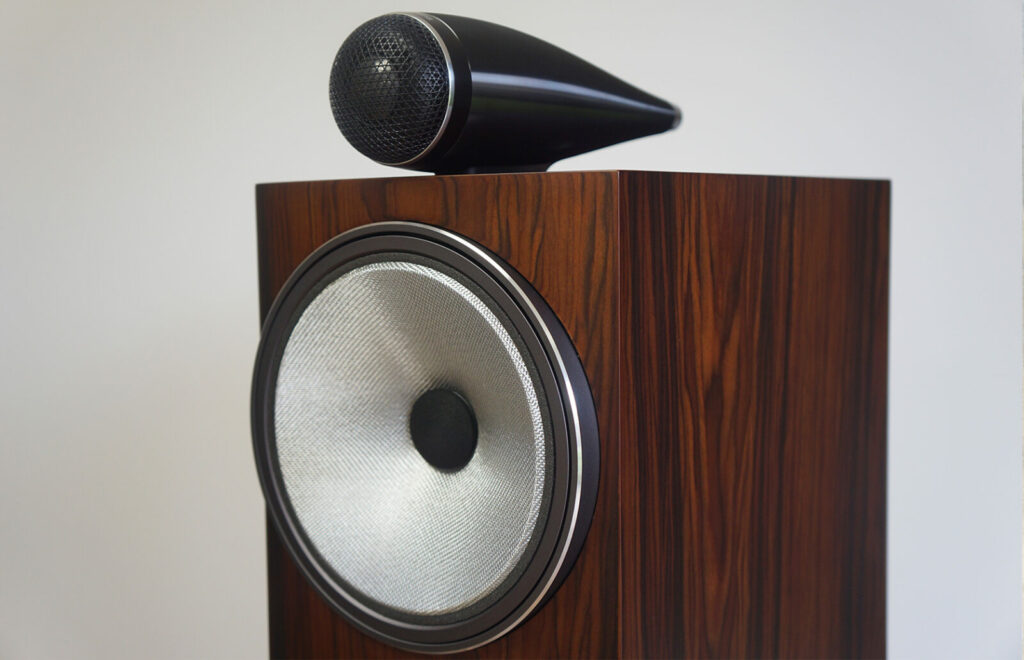
Trademark tweeter on top tells you the 703 S3 is now in the upper echelons of Bowers & Wilkins loudspeaker technology
Setting the standard
The updates continue to the 703 S3’s 150mm (6″) midrange cone, which looks downright sexy in its silver woven livery, that’s formed from the brand’s Continuum composite material.
Those with longer memories will remember this driver fabric being introduced some years back to upgrade Bowers’ earlier Kevlar cones, (which were also ahead of their time) and it has been evolved ever since.
The midrange tech doesn’t stop here either, as around the cone’s outer edge is the brand’s Fixed Suspension Transducer (FST) approach, in place of a more traditional cone surround, to reduce colouration and ensure more consistent behaviour across its surface. Behind the cone sits the brand’s biomimetic suspension system that’s lifted straight from the 800 Diamond Series, consisting of an open skeletal plastic polymer spider in place of the usual yellow fabric type, to avoid air being trapped between the main cone and spider, as the driver moves back and forth.
The midrange unit sits within its own enclosure in the cabinet, attached via a rear bracing rod, while also being decoupled thanks to more vibration absorbing compound material at critical points.
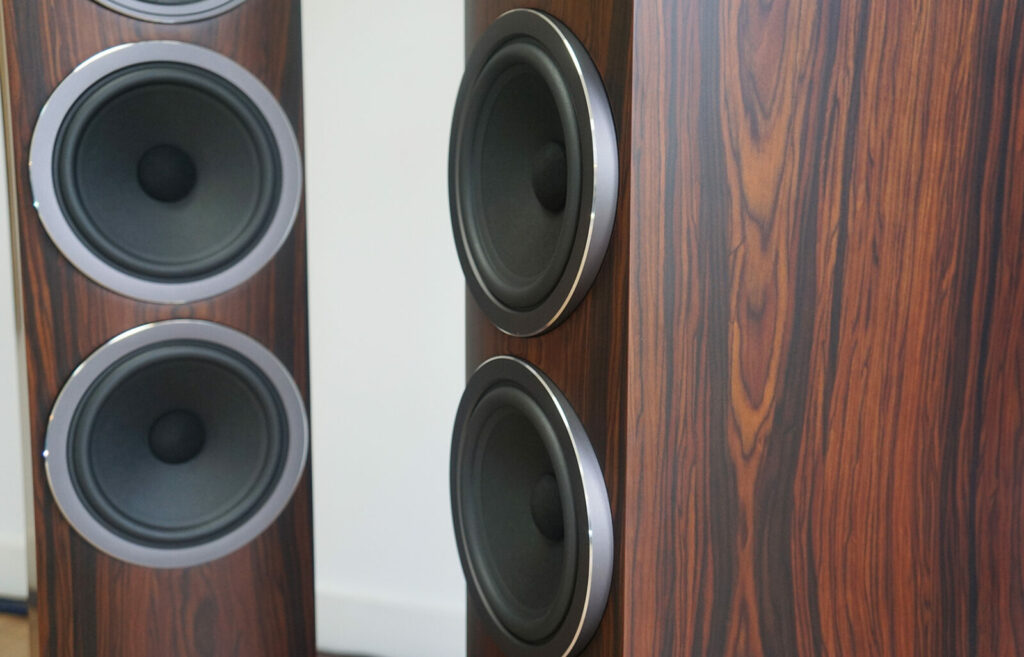
Drive units stand proud of the 703 S3 front baffle in dedicated pods. New sustainably sourced real wood mocha veneer finish is a delight to behold, with satin white and gloss black also available
Standing proud
Like the midrange unit, the 703 S3’s twin 165mm (6.5″) bass units also get a new chassis and motor system. Instead of Continuum, these are formed from the brand’s paper/EPS foam Aerofoil Profile sandwich, with varying thickness for improved stiffness and performance.
As the image above shows, all the drive units now stand proud of the speaker’s front baffle within pod enclosures, which is enhanced thanks to the 700 models sporting curved front baffles for the first time. At just 193mm wide the speaker’s main cabinet is also narrower than the previous 703, resulting in a more elegant looking slimmer profile, alongside minimising the impact of the front baffle on the drive units’ audio performance.
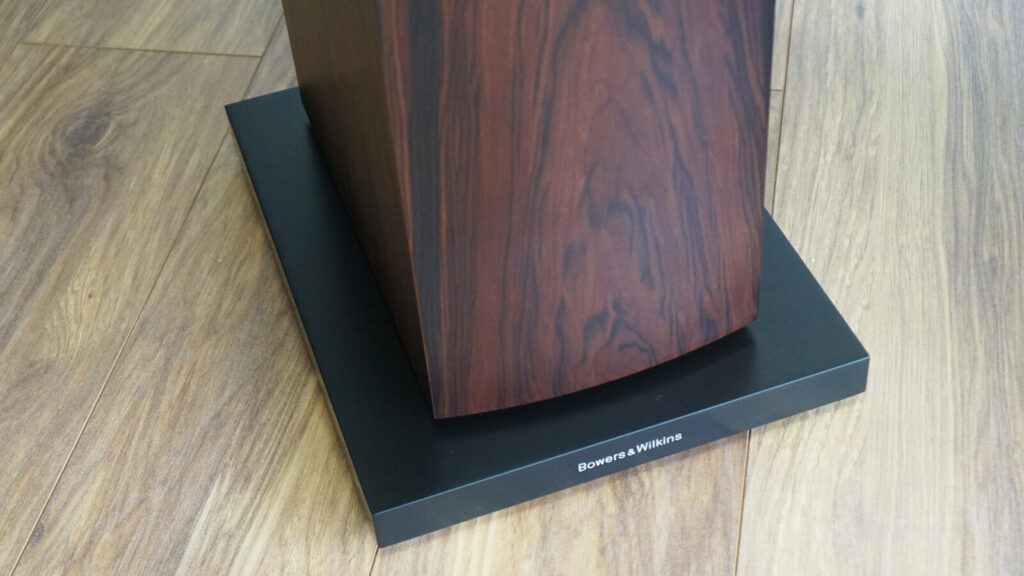
Big footed 703 S3, with branding to match
The 703 S3 also gets a new 30mm thick dedicated fixed plinth to aid stability, measuring 290x370mm (WD) compared to the main cabinet’s 192x310mm (WD) profile. And to show they’ve thought of everything, Bowers provides both M6 stainless spikes or plastic domes for mounting on either carpets or hard floors, which is a simple but welcome inclusion.

Upgraded loudspeaker terminals are a step up from most brands and facilitate single or biwiring connectivity
Finishing off the low frequency treatment, a rear bass port is on hand, that’s more tuneable than most thanks to two supplied foam bungs to narrow or close it. As you’d expect, a magnetically attached grille is included which follows the cabinet’s curved front baffle nicely, to keep those drive units safe from dust and inquisitive fingers.
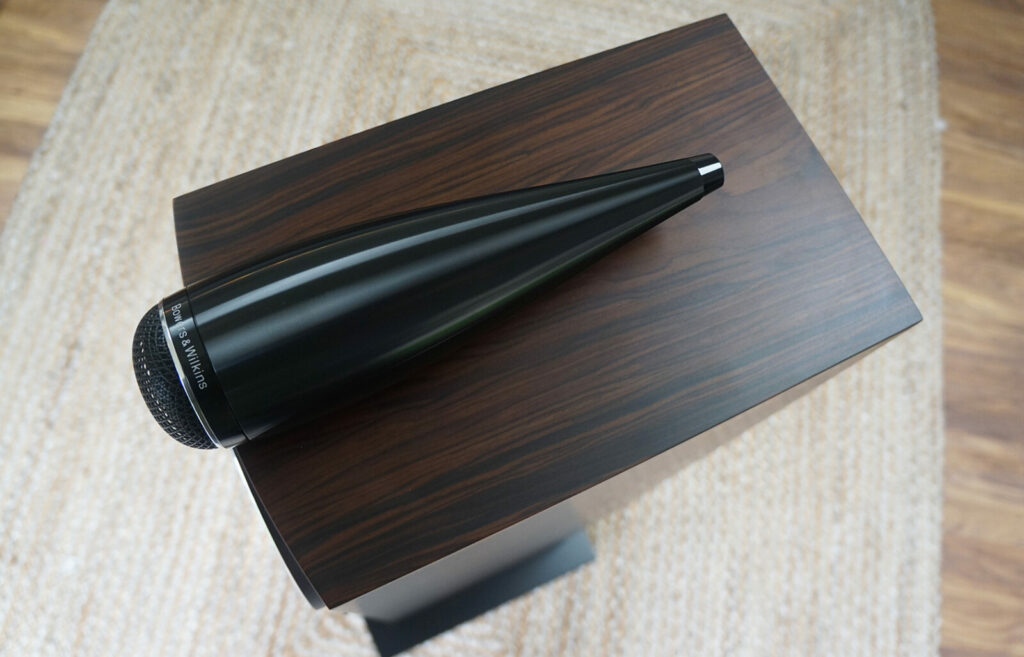
Viewed from above, the cabinet’s curved front baffle adds style as well as sonic substance with flowing lines that complement the tweeter on top
Performance
Summarising the sonic personality of the 703 S3 in a simple soundbite is in some ways more challenging than many rivals. Because they are so transparent in their performance, they impart less flavour of their own, ensuring you hear more of the music as it was intended.
But that’s not to suggest they are in any way vanilla sounding, because while their signature is about neutrality, their presentation is packed with dynamics, scale and detail, just without colouration.
They’re also easy to drive, as their 90dB/8 ohm specs allude to. My reference Musical Fidelity M6 pre/power amps aren’t short of grunt of course with over 235W on tap into 8 ohms and with a Primare NP5/NP30 digital front end providing the music, I’m confident the B&Ws are well matched with these hifi sparring partners, combining to give impressive levels of sheer grip and authority. Hence while lower powered amps will suffice, these speakers will equally welcome plenty of watts up them to really make them sing.
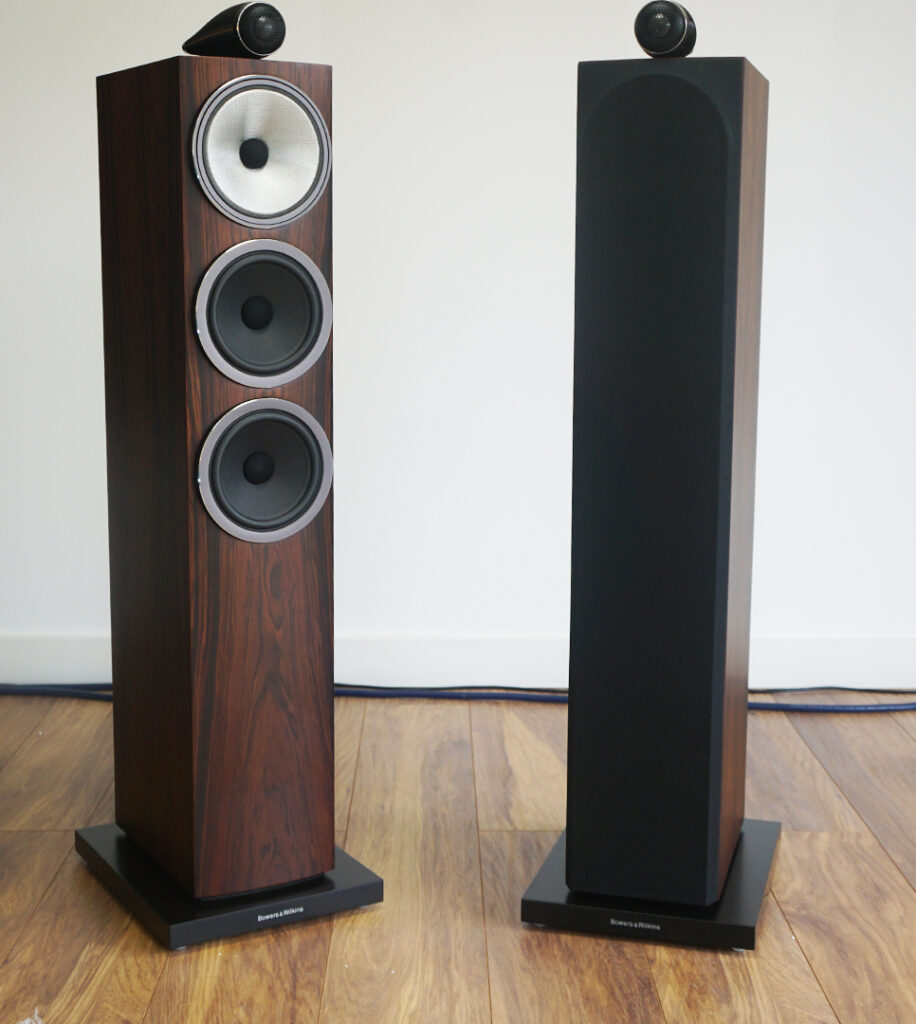
Full length grille is a practical add on, but the 703 S3 just look too good to hide their hardware
Fighting talk
Dialling in a remastered 16-bit/44kHz Qobuz file of INXS’s Devil Inside from their career defining Kick album, shows just how appropriate the track’s title is for the Bowers’. The speed and precision of the song’s intro sounds so full of energy and attack it’s arresting, and hammers home why Abbey Road Studios relies on Bowers & Wilkins hardware for playback duties. The pace and precision the B&Ws render from the second the track starts shows how much these speakers can deliver, and with a feel of effortless recovery that’s akin to a world class boxer who’s itching for round two.
Alongside their grip, detail retrieval is also deliciously focussed via the Bowers. Positioned around 600mm into my 6.8×4.8m listening room and toed in slightly so their crossover axis is just behind my listening position, Micheal Hutchence’s teasing vocal noises in the lead in section sound so refined and I’m checking the track’s resolution to see if I’m not hearing a hires 24/192 file, given how well they dig into the production.
Changing seasons
Moving into mellower territory thanks to Beth Orton’s Last Leaves Of Autumn, again via Qobuz but this time at 24-bit/44kHz, reveals the 703 S3s aren’t just about flexing their detail muscles. From the opening bars I’m immediately pulled deep into the fabric of the recording and closer to its emotional intent as Orton’s richly textured vocals are opened up across the soundstage. The treble and midrange performance that these speakers can achieve is to put it simply, pure class, illustrating the pro engineering that underpins their performance.
Low frequencies aren’t neglected either with levels of refined slam that’s in the territory of infinite baffle designs, but with added extension that’s also nicely controlled. In my weeks of testing these speakers I haven’t needed to reach for the supplied bungs once, such is their ability to avoid booming or becoming wayward, even when placed close to a rear wall.
Long Distance Calling’s 1996 album How Do We Want To Live? at 24/96 is a test of any loudspeaker’s mettle and the 703 S3 step up to the plate without hesitation.
The soundstage depth, density and instrument separation on Fail / Opportunity for example extends my listening room in feet rather than inches, and the strings are rendered with such a sense of body, I can feel their tonality change with each change of the bow’s direction which is hairs on the back of the neck stuff.
In Summary
When hunting for a mid to high end loudspeaker I tend to ask for three things – genuine dynamics, detail retrieval with finesse beyond the level below and effortless musicality.
Usually one of these attributes is enough to win many listeners over, but combining the three in the way the 703 S3 does is the golden trilogy we music lovers revel in. Combine this with how much Bowers & Wilkins tech is packed into this package for the money, earns them a firm recommendation without hesitation. For under five grand, they’re hard to beat.


